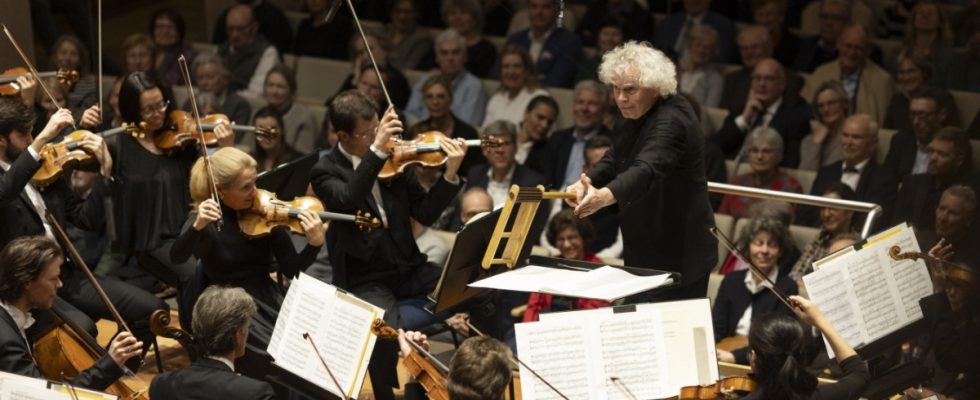“Big Rattle”: Many listeners will definitely want to call Simon Rattle, who has only been tirelessly serving as chief conductor of the BR Symphony Orchestra for a few months, this title, as the 69-year-old is currently showing what he can do so admirably well, from the Baroque to contemporary music . Rattle was a drummer in a previous life, and to this species of musician, “Rattle” is a rattle that, when swung over the head, emits a wild rattling sound; It’s not just children who are excited about it. And “Big Rattle” means a giant rattle, which Rattle now has lying on a small table next to him in the Hercules Hall. But you quickly forget that in the premiere of the bulging, flowing song “Aquifer” composed by Thomas Adès, the technical term meaning rock layers flooded with groundwater.
Adès, born in 1971, is a composer accustomed to success, his pieces are always popular with audiences, and he has had a long, friendly collaboration with Rattle. “Aquifer” utilizes all the possibilities of the playful symphonic musicians, who are usually required in their entirety in this densely flowing orchestral deluge. And only at the very end does Rattle take hold of the Big Rattle and, swinging it courageously, puts an end to the torrent of sound that ends in great volume. Huge, amused applause.
In the prelude and finale of Richard Wagner’s “Tristan”, Rattle also gives himself over to the musicians’ rich, dark, dense and warm flow of sound, fueling it to the point of breaking boundaries. It’s good that no singers have to face these masses of sound.
But in Ludwig van Beethoven’s Sixth, which depicts a country party of stressed-out city dwellers, Rattle shows his other side, playing the role of an analyst who elegantly unravels the complexities of the music. The slow movement particularly benefits from this, as it quickly becomes too long and too monotonous. Rattle approaches the piece urgently. Beethoven suddenly shows himself to be an avant-garde hobbyist, much more radical than his successor Thomas Adès. But Rattle never demands more from the symphonic musicians than these masters can naturally do. That’s an admirable amount. But something is missing: the vision, the desire for the impossible and transcendence.

